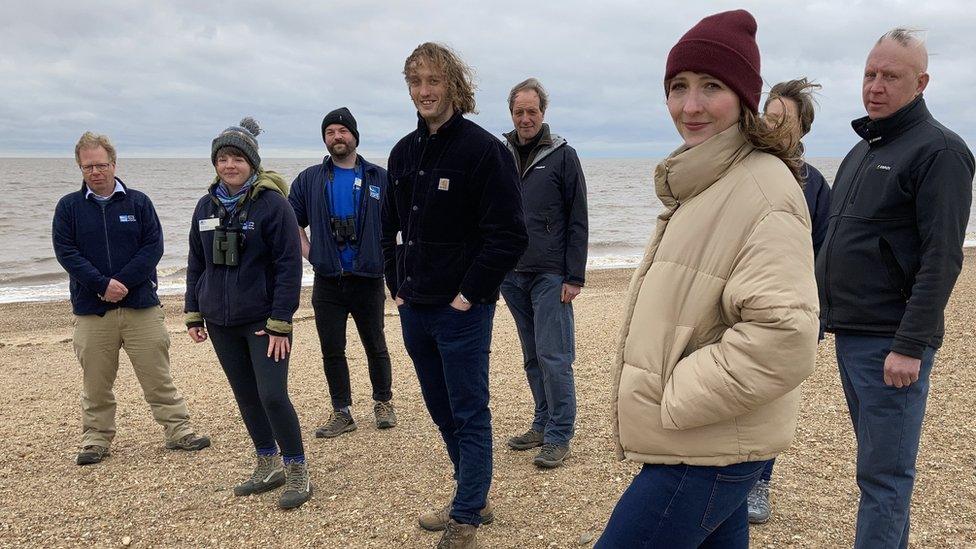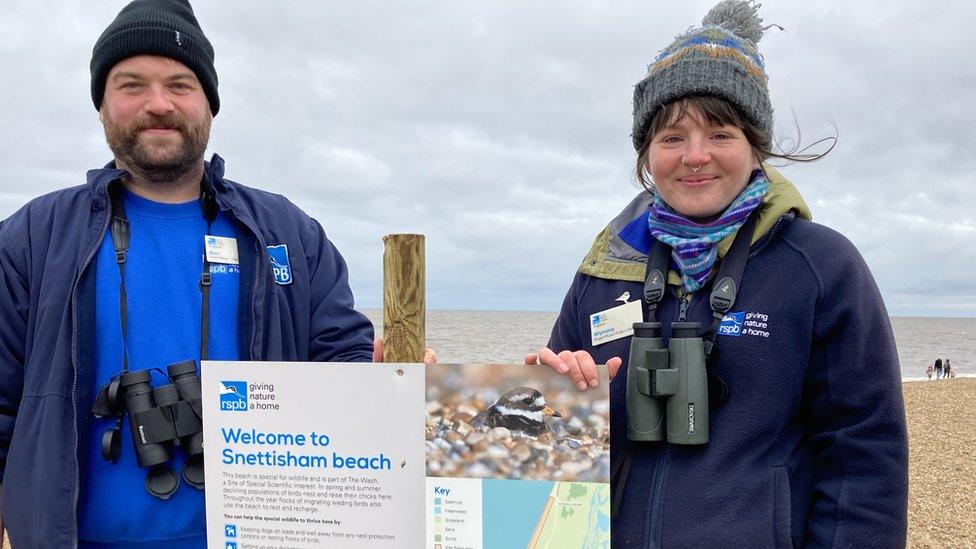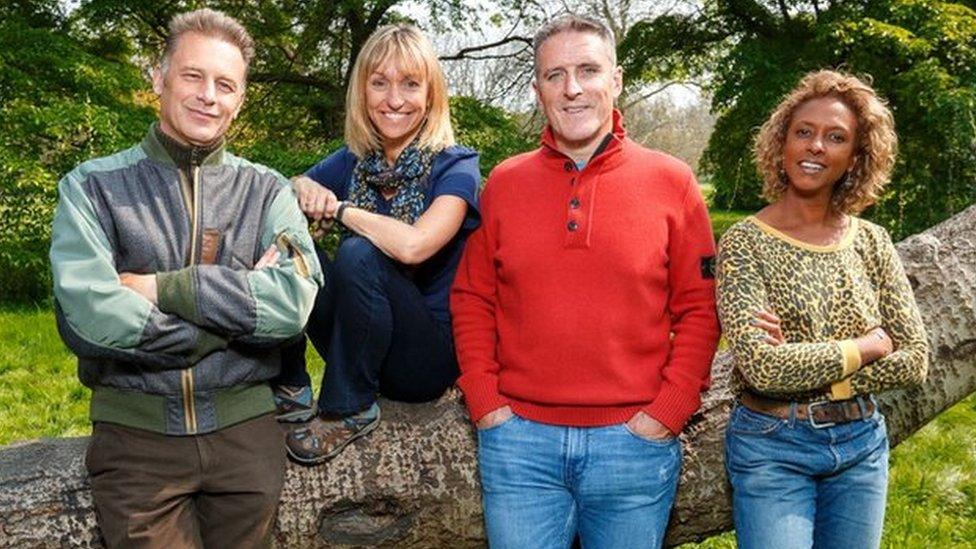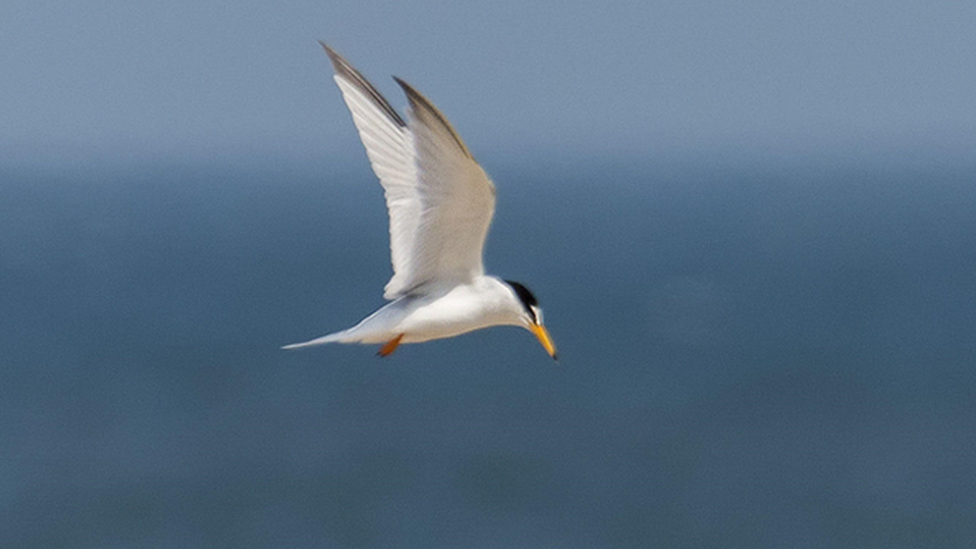Norfolk wildlife groups call to protect ground-nesting birds
- Published

Nature conservationists have joined together to try to protect breeding birds along the Norfolk coast
Conservationists have joined together to try to protect rare breeding birds along swathes of the Norfolk coast in the face of rising visitor numbers.
Ground-nesting birds including oystercatchers, little terns and ringed plovers, whose numbers have dropped by 79% in 35 years, are all under threat.
But wildlife champions have said beach visitors could make a difference by taking some simple steps.
"It's the balance between access and conservation," said the National Trust.
At the launch of the joint scheme on Snettisham beach near Hunstanton, the National Trust's Victoria Egan said it was about reinforcing the same message up and down the coast.
"It's asking people to take care in the places most important to wildlife," she said.
Ms Egan said how ringed plovers and their eggs were particularly well camouflaged, with the eggs laid in small dips in the sands instead of traditional nests.
"It's trying to look out for those birds... you could easily tread on them without even knowing it," said Ms Egan.
The new campaign urges people to follow the Countryside Code at the beach.
Visitors are asked to stay away from fenced-off breeding areas, follow directions on signs and keep dogs on a lead when asked to do so.

The RSPB has installed signs on Snettisham beach to spread the same message along the Norfolk coast about looking after ground-nesting breeding birds
The scheme also involves the Norfolk Wildlife Trust, RSPB, Wild Ken Hill, Holkham Estate and Norfolk Coast Partnership.
The RSPB has installed signs along Snettisham beach warning people about the breeding birds, while the Holkham estate, near Wells-next-the-Sea, has put in restrictions for dogs again along its six-mile (9.6km) beach after imposing them last year.
"We've put up cordons and signage on 1 April and that will continue through to 31 August," said the estate's Jake Fiennes.
"We have 800,000 visitors in 500,000 cars with 300,000 dogs and we've seen a 60% decline in shore bird breeding success in the last 40 years, so it's imperative that we start to do something about it.
"It's an amazing place - we want people to come and enjoy it with their canine friends or without, but actually ensure that they recognise the impacts they can have on breeding birds."

Little tern chicks can be found in nesting season along the Norfolk coast
With Norfolk the UK's most important county for nesting little terns, Katie Owen, from the Norfolk Coast Partnership, said it was important people gave "wildlife the space to thrive".
"We need to get the balance between prosperity and protection spot on," she said.
"We've all had a horrible two years of being trapped inside so, of course, everybody needs to come to the coast and get that sea air on their face."

Find BBC News: East of England on Facebook, external, Instagram, external and Twitter, external. If you have a story suggestion email eastofenglandnews@bbc.co.uk
Related topics
- Published14 June 2021

- Published12 December 2020
